Discover the Top 10 Largest Freshwater Fish in North America
Published: 30 Mar 2025
North America is home to an incredible diversity of wildlife, and some of the largest freshwater fish in the world can be found swimming in its lakes, rivers, and reservoirs. From giant catfish to massive sturgeons, these fish are not only impressive due to their size but also play an essential role in the ecosystems of their habitats.

In this article, we will dive into North America’s top 10 largest freshwater fish, thoroughly analyzing their physical characteristics, distribution, behavior, and conservation status.
Whether you’re an avid fisherman, a wildlife enthusiast, or simply curious about the giants lurking beneath the water’s surface, this guide will give you all the details about these fascinating creatures.
1. Introduction
Overview of Freshwater Giants
Freshwater fish are diverse, with many species reaching sizes that are simply astonishing. These fish have evolved to thrive in North America’s many lakes and rivers, some reaching lengths that defy imagination. These giants capture the attention of anglers and play vital ecological roles in their habitats, maintaining healthy ecosystems by controlling populations of smaller species and contributing to the biodiversity of aquatic environments.
Purpose of the Article
This article presents a detailed look at the top 10 largest freshwater fish in North America. We will examine each species’ size, physical characteristics, distribution, and unique attributes, comprehensively understanding these impressive creatures.
2. Criteria for Selection
When compiling a list of the largest freshwater fish in North America, several key factors were considered:
Size Metrics
The size of each fish species is evaluated based on their maximum recorded length and weight. We have included the biggest fish ever caught in each category to give a sense of their potential size.
Habitat Range
This article considers species in North America, including the United States, Canada, and Mexico. These fish are primarily found in freshwater environments such as rivers, lakes, and reservoirs.
Conservation Status
We’ve also examined each species’ conservation status, highlighting those that are endangered or threatened. Conservation efforts are critical for the survival of some of these giant fish, and understanding their current status can inform better environmental practices.
3. Detailed Profiles of the Top 10 Largest Freshwater Fish
Let’s explore the top 10 largest freshwater fish in North America, highlighting their unique characteristics and the ecosystems they inhabit.
1. Sturgeon (Acipenseridae)
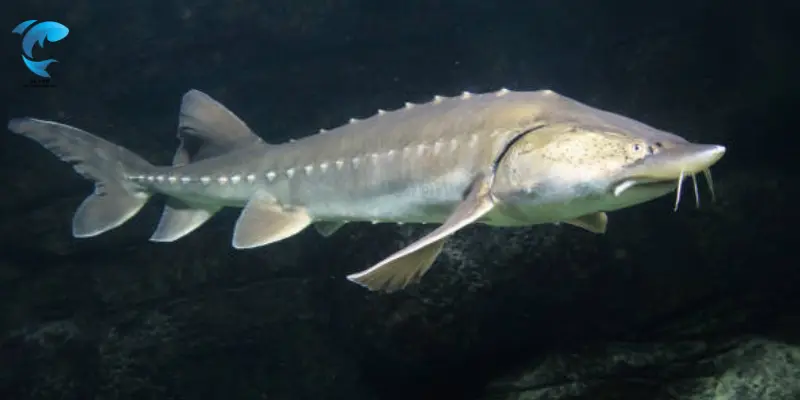
- Scientific Name: Acipenseridae (family includes various species)
- Physical Characteristics: Sturgeons are among the most ancient fish species. They can reach up to 12 feet in length and weigh over 1,500 pounds. Known for their long bodies and bony scutes (plates) on their skin, sturgeons have a prehistorical appearance.
- Habitat and Distribution: Found in rivers and lakes across North America, particularly in the Great Lakes and Mississippi Rivers.
- Feeding Habits: Sturgeons are bottom feeders, using their barbed mouths to sift through sediment for insects, crustaceans, and small fish.
- Conservation Status: Many species of sturgeon are endangered due to habitat loss and overfishing. Conservation efforts focus on restoring habitats and preventing illegal fishing.
2. White Sturgeon (Acipenser transmontanus)
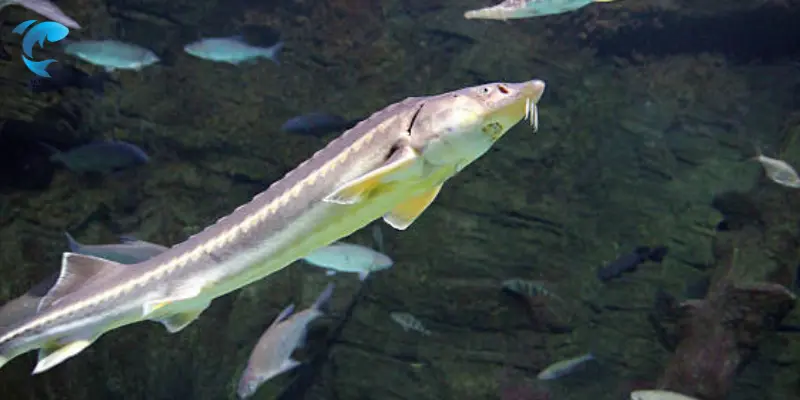
- Scientific Name: Acipenser transmontanus
- Physical Characteristics: The largest sturgeon species in North America, white sturgeons can grow over 20 feet long and weigh more than 1,500 pounds. Their bodies are covered with bony plates, and they have long, sharp snouts.
- Habitat and Distribution: Found in the rivers and estuaries of the Pacific Northwest, particularly in the Columbia and Fraser Rivers.
- Feeding Habits: White sturgeons are opportunistic feeders, consuming a variety of invertebrates and fish.
- Conservation Status: Listed as threatened in many areas due to overfishing, habitat disruption, and pollution. Efforts are underway to preserve their populations through sustainable fishing practices and habitat restoration.
3. Alligator Gar (Atractosteus spatula)
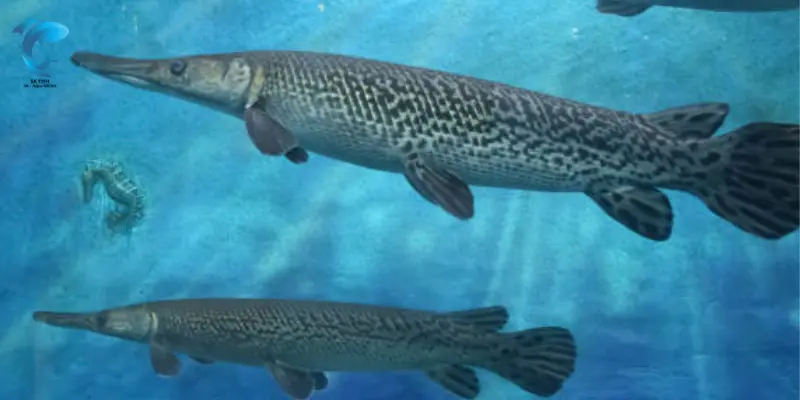
- Scientific Name: Atractosteus spatula
- Physical Characteristics: The alligator gar is a large, predatory fish that can reach lengths of up to 10 feet and weigh over 300 pounds. It has a long, slender body with a toothy, alligator-like snout.
- Habitat and Distribution: Found in freshwater rivers and lakes across the southeastern United States.
- Feeding Habits: This species is a carnivore, feeding on fish, birds, and small mammals.
- Conservation Status: Although not endangered, the alligator gar faces habitat loss and overfishing. Threats Conservation efforts are focused on protecting its natural habitats and regulating fishing practices.
4. Blue Catfish (Ictalurus furcatus)
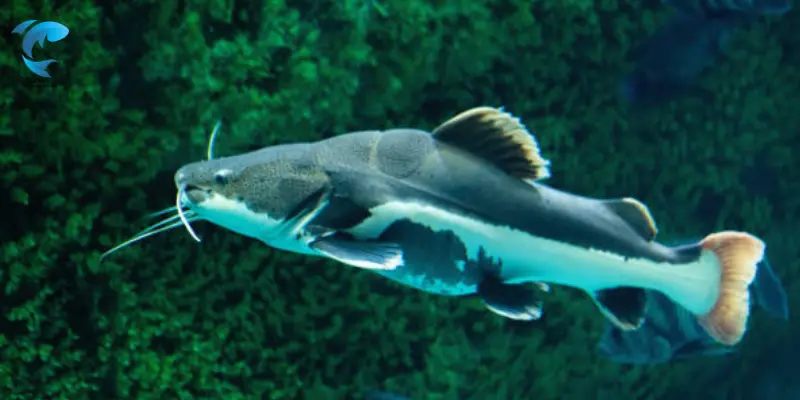
- Scientific Name: Ictalurus furcatus
- Physical Characteristics: Blue catfish are one of the largest species in North America, reaching lengths of up to 5 feet and weighing over 100 pounds. They are recognized by their smooth, blue-gray skin and long, flat head.
- Habitat and Distribution: Blue catfish are native to the Mississippi River basin and are found in large rivers and reservoirs.
- Feeding Habits: These fish are opportunistic feeders, preying on smaller fish, crustaceans, and even larger animals.
- Conservation Status: Blue catfish populations are stable but occasionally impacted by habitat disruption and pollution.
5. Flathead Catfish (Pylodictis Olivares)
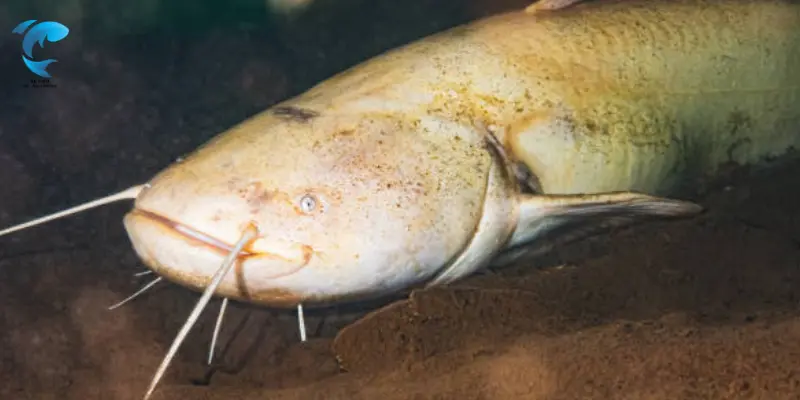
- Scientific Name: Pylodictis Olivares
- Physical Characteristics: The flathead catfish is a large, predatory fish with a broad, flat head. It can grow up to 5 feet long and weigh over 120 pounds.
- Habitat and Distribution: Found in the large rivers of North America, particularly in the Mississippi and Ohio Rivers.
- Feeding Habits: Flathead catfish are carnivorous and feed on other fish, including smaller catfish and freshwater drums.
- Conservation Status: Not considered endangered, but overfishing and water quality issues sometimes impact their populations.
6. Lake Sturgeon (Acipenser fulvescens)
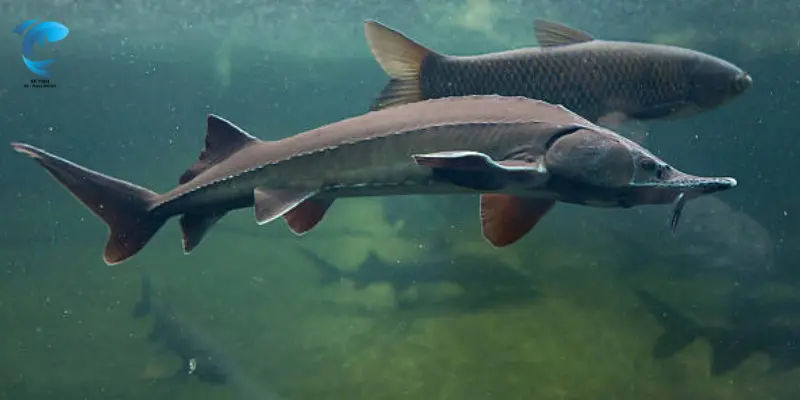
- Scientific Name: Acipenser fulvescens
- Physical Characteristics: Lake sturgeon can grow up to 8 feet long and weigh more than 300 pounds. They are characterized by their long, torpedo-shaped bodies and bony scutes.
- Habitat and Distribution: Found in the Great Lakes and other large, slow-moving rivers.
- Feeding Habits: Like other sturgeons, they feed on the bottom, consuming invertebrates and small fish.
- Conservation Status: Lake sturgeon populations are declining due to habitat loss, water pollution, and overfishing.
7. Tennessee Sturgeon (Acipenser brevipinnis)

- Scientific Name: Acipenser brevipinnis
- Physical Characteristics: Smaller than other sturgeons, the Tennessee sturgeon can grow to 3-4 feet and weigh around 50 pounds.
- Habitat and Distribution: Native to the Tennessee River and its tributaries.
- Feeding Habits: They are bottom feeders, eating small fish, insects, and invertebrates.
- Conservation Status: Critically endangered, with efforts focused on habitat restoration and preventing poaching.
8. Muskellunge (Esox masquinongy)
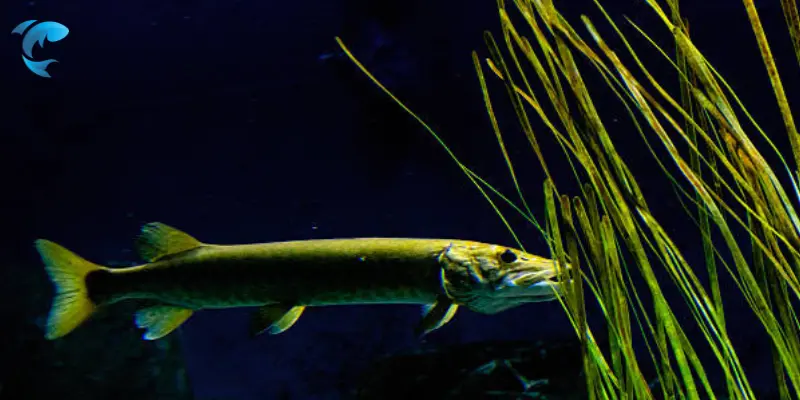
- Scientific Name: Esox masquinongy
- Physical Characteristics: Muskellunge can grow up to 6 feet long and weigh over 50 pounds. Known for their long, slender bodies and sharp teeth, they are often mistaken for pike.
- Habitat and Distribution: Found in lakes and rivers across the northeastern United States and Canada.
- Feeding Habits: Muskellunge are apex predators, feeding on smaller fish, amphibians, and even birds.
- Conservation Status: Although not endangered, they face habitat loss and water quality degradation. threats
9. Giant Freshwater Stingray (Himantura polylepis)
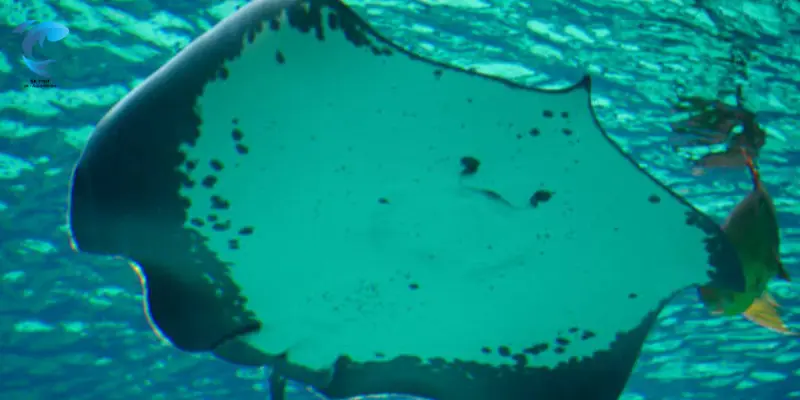
- Scientific Name: Himantura polylepis
- Physical Characteristics: Although native to Asia, giant freshwater stingrays are occasionally found in North America. These massive creatures can grow up to 16 feet across and weigh over 1,000 pounds.
- Habitat and Distribution: These fish are typically found in slow-moving rivers and estuaries.
- Feeding Habits: They feed on bottom-dwelling organisms such as crustaceans and mollusks.
- Conservation Status: Their populations are declining due to overfishing and habitat destruction.
10. Channel Catfish (Ictalurus punctatus)
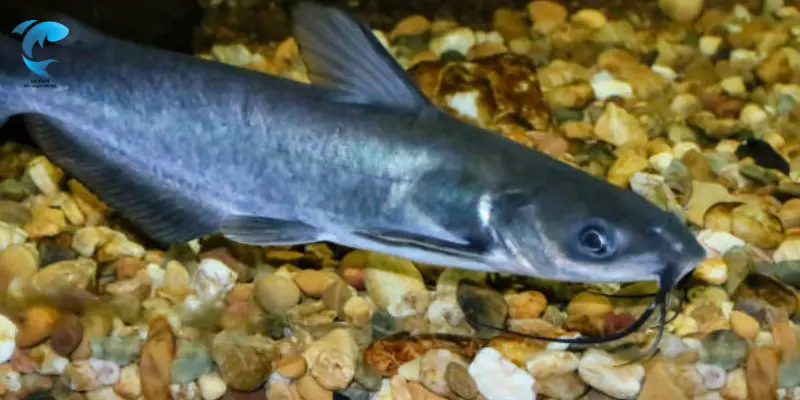
- Scientific Name: Ictalurus punctatus
- Physical Characteristics: Channel catfish can grow up to 4 feet long and weigh over 50 pounds. Their forked tail and whisker-like barbels recognize them.
- Habitat and Distribution: Found across North America, particularly in rivers and large reservoirs.
- Feeding Habits: Channel catfish are omnivores that feed on plant matter and smaller fish.
- Conservation Status: Populations are abundant and healthy, but local overfishing and habitat destruction pose threats.
4. Conservation Challenges and Efforts
Human Impact
Many of North America’s largest freshwater fish species face significant threats from human activities. Overfishing, habitat destruction due to damming and pollution and the introduction of invasive species have all contributed to the decline of these magnificent fish.
Legal Protections
State and federal regulations protect various species of large freshwater fish, particularly sturgeons and catfish. These laws help regulate fishing seasons and bag limits and protect vulnerable populations.
Conservation Success Stories
In recent years, conservation efforts such as habitat restoration, fish passage improvements, and regulated fishing have helped improve the populations of several species. Programs like catch-and-release and restocking initiatives have shown promising results.
5. Conclusion
North America’s freshwater giants are not just marvels of nature; they play an essential role in maintaining healthy ecosystems. From the Great Lakes’ massive sturgeons to the Mississippi River’s monstrous catfish, these creatures are worth protecting. By supporting conservation efforts, practicing sustainable fishing, and advocating for habitat preservation, we can ensure that these awe-inspiring species continue to thrive for generations.
The largest freshwater fish ever caught is not just a record-breaking fish but a symbol of the natural wonders in our rivers and lakes. As we continue to study, appreciate, and protect these species, we secure the future of some of North America’s most fascinating and critical aquatic inhabitants.
Stay informed, follow responsible fishing practices, and contribute to the conservation of these incredible giants.
6. References
- National Oceanic and Atmospheric Administration (NOAA)
- U.S. Fish and Wildlife Service
- International Union for Conservation of Nature (IUCN)
- Fisheries and Oceans Canada
- American Fisheries Society
FAQ Section: Top 10 Largest Freshwater Fish in North America
The largest freshwater fish in the world is the beluga sturgeon (Huso huso), found primarily in the Caspian and Black Sea basins. These colossal fish can grow to lengths of over 20 feet and weigh as much as 3,463 pounds (1,570 kg). Though not native to North America, they are considered the largest in both size and weight in freshwater habitats globally.
The biggest fish ever caught in freshwater is a Mekong giant catfish (Pangasianodon gigas), which was captured in Thailand’s Mekong River. This fish weighed in at an astounding 646 pounds (293 kg) and measured about 9 feet (2.7 meters) in length. This catch holds the record for the largest freshwater fish ever documented.
The white sturgeon (Acipenser transmontanus) is North America’s largest fish species. These stuNativeivers of the western United States and Canada can reach these sturgeon lengths of 18 feet (5.5 meters) and weigh up to 1,500 pounds (680 kg). While not commonly encountered in everyday fishing, their massive size makes them a giant in North American waters.
The record for the largest freshwater fish caught in the U.S. goes to the white sturgeon. One of the largest specimens caught weighed about 468 pounds (212 kg) and was recorded in the Columbia River, which spans the border of Washington and Oregon. This species remains an impressive symbol of the vast biodiversity of North American freshwater ecosystems.
The largest freshwater bass ever caught is the largemouth bass (Micropterus salmoides). In 1932, a record-setting bass weighing 22 pounds 4 ounces (10.1 kg) was caught in Montgomery Lake, Georgia. This remains the official world record for the largest largemouth bass. Anglers across the U.S. continue to seek out this species. While these bass don’t grow as large as sturgeons, their size still makes them a notable contender in freshwater fishing.

SK Fish is your trusted source for practical fish care tips and delicious seafood recipes. Our team is dedicated to providing reliable, well-researched content for fishing enthusiasts and home cooks alike.

- Be Respectful
- Stay Relevant
- Stay Positive
- True Feedback
- Encourage Discussion
- Avoid Spamming
- No Fake News
- Don't Copy-Paste
- No Personal Attacks



- Be Respectful
- Stay Relevant
- Stay Positive
- True Feedback
- Encourage Discussion
- Avoid Spamming
- No Fake News
- Don't Copy-Paste
- No Personal Attacks





